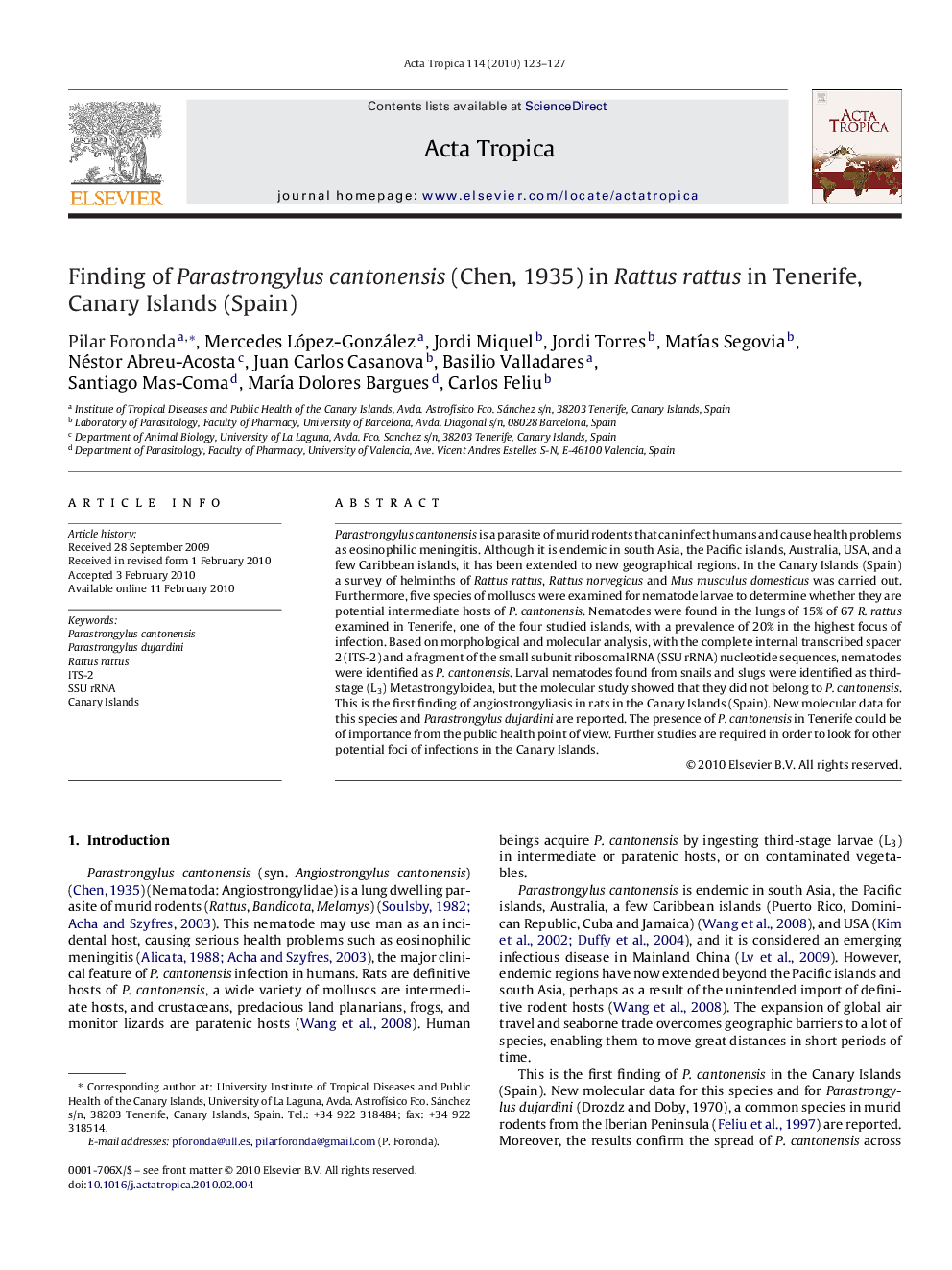| Article ID | Journal | Published Year | Pages | File Type |
|---|---|---|---|---|
| 3394164 | Acta Tropica | 2010 | 5 Pages |
Parastrongylus cantonensis is a parasite of murid rodents that can infect humans and cause health problems as eosinophilic meningitis. Although it is endemic in south Asia, the Pacific islands, Australia, USA, and a few Caribbean islands, it has been extended to new geographical regions. In the Canary Islands (Spain) a survey of helminths of Rattus rattus, Rattus norvegicus and Mus musculus domesticus was carried out. Furthermore, five species of molluscs were examined for nematode larvae to determine whether they are potential intermediate hosts of P. cantonensis. Nematodes were found in the lungs of 15% of 67 R. rattus examined in Tenerife, one of the four studied islands, with a prevalence of 20% in the highest focus of infection. Based on morphological and molecular analysis, with the complete internal transcribed spacer 2 (ITS-2) and a fragment of the small subunit ribosomal RNA (SSU rRNA) nucleotide sequences, nematodes were identified as P. cantonensis. Larval nematodes found from snails and slugs were identified as third-stage (L3) Metastrongyloidea, but the molecular study showed that they did not belong to P. cantonensis. This is the first finding of angiostrongyliasis in rats in the Canary Islands (Spain). New molecular data for this species and Parastrongylus dujardini are reported. The presence of P. cantonensis in Tenerife could be of importance from the public health point of view. Further studies are required in order to look for other potential foci of infections in the Canary Islands.
